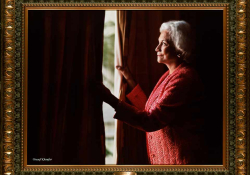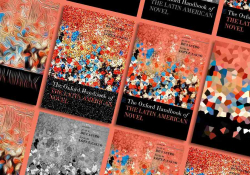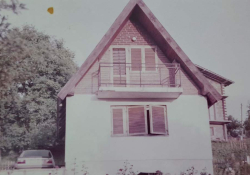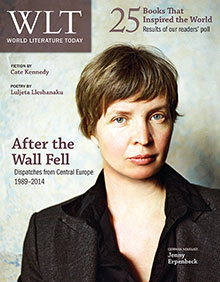Science-Fiction Fandom in United Berlin
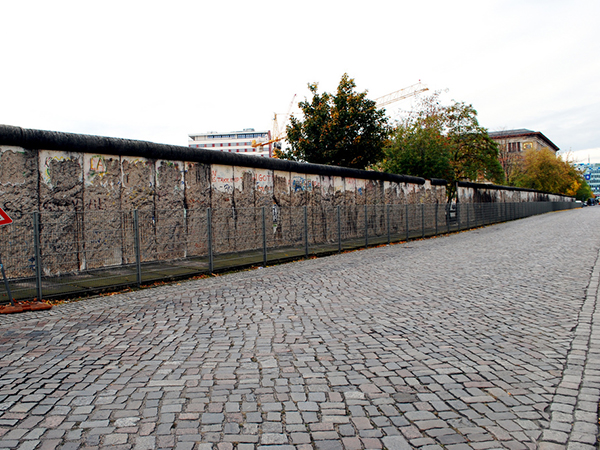
Fan club activities can be essential to the promotion of domestic science fiction in a foreign country. The science-fiction fan clubs of Berlin share a unique history shaped by the Cold War division of the city and the subsequent reunification of Germany in 1990. In the years since, they have become a center of German-language science-fiction production.
The year 2014 marks twenty-five years since the fall of the Berlin Wall and the Iron Curtain. For many years after the wall had been removed physically, there remained what was termed a “wall in the head.” This refers to the fact that many Berliners continued to live in the same neighborhoods and follow the same habits before and after the fall of the wall. Little by little, as Berlin rebuilt and renovated, the next generation arrived and remnants of the division began to disappear.
The Berlin science-fiction fan clubs are an exception. Fan clubs from the eastern and western halves of the city had always been very open to science fiction and to fans and authors from all over Europe and the US, and they had initiated contact abroad whenever possible. To this end, several fans from West Berlin’s Science-Fiction Club Berlin (SFCB) traveled to East Berlin in May 1988 to see Andymon’s second Tage der Phantastischen Kunst (Days of fantastic art). Over one thousand people attended the event at the Zeiss Major Planetarium in the Prenzlauer Berg neighborhood. Some fans from the East went out for dinner with their western visitors. This initial contact led to a further visit just over a year later.
On November 9, 1989, the night the wall fell, several Andymon members crossed over the border into West Berlin to celebrate. Lost on a side of Berlin they had never seen, they decided to contact one of the West Berlin fans from their earlier visit. Luckily, they found her, and this second meeting, now on the other side of the border, helped to cement a future collaboration between both Berlin fan clubs. The first collaborative effort came as early as 1990 with the short-lived fanzine Mauersegler, the title of which refers to a variety of bird (common swift) and also means “one who sails over the wall.” Andymon members also helped organize and present at the Bärcon in West Berlin in September 1990. (According to Hardy Kettlitz, six Andymon club members also traveled to the FreuCon in Freudenstadt in the Black Forest in 1990.) Famous science-fiction collector Forry Ackermann visited the clubs in both East and West in September 1990. Both of the clubs still exist today, although Andymon has become dominant in recent years. It is fair to say that without these club members, many of whom are not only active fans but also translators, bibliographers, editors, and authors in their own right, German science fiction would be less rich and vibrant.
Short History of the Clubs
The Science-Fiction Club Berlin (SFCB) was founded in West Berlin in 1956 and was very active in promoting German science fiction through formal presentations at club meetings, hosting conventions such as Bärcon, and in fanzines and other book publications. Initially, the West Berlin fans had to found their own independent club separately from that of the various branches of the growing Science-Fiction Club of Germany (SFCD). This was due to the special status of the city, which was affiliated with West Germany, but not officially part of it. In 1970 member Heinz-Jürgen Ehrig, who would later own one of the biggest collections of science fiction in Germany, helped start the Andromeda Nachrichten (Andromeda news), which eventually became the established fanzine of the Science-Fiction Club of Germany. It was designated Europe’s best fan magazine in 2009. The Berlin fan club was also known for the magazine Facetten (Facets), edited by Heinz-Jürgen Ehrig (1982–87), and Bärzin (1997–2002).
A quick review of the articles in Bärzin reveals an intense interest in the history of German science fiction. One issue contains a reprint of an essay by German author Willy Ley from 1930 on the topic of American science fiction (Dec. 31, 2002). Another issue includes a lesser-known science-fiction short story in Saxon dialect (Sept. 13, 2001). There is a discussion regarding Arno Schmidt’s exclusion from the German science-fiction canon (Jan. 27, 1998). When Olaf Spittel and Hans-Peter Neumann’s bibliographies of East German science fiction appeared, they, along with author Karlheinz Steinmüller, were guests at the West Berlin club meetings to discuss German Democratic Republic (GDR) science fiction. The issue from September 13, 2000, also reports on a joint trip with Andymon Club members to the German rocket museum in Peenemünde.
Fan members maintained an active interest in international science fiction as well. This practice granted them access to discourses on science fiction that ran counter to those in East Germany.
The history of the East Berlin fan club was a bit more complicated due to the repressive nature of the regime run by the Socialist Unity Party. It was not the first science-fiction fan club in East Germany. That honor belonged to the Stanisław Lem Club (SLC) of Dresden, founded in 1969 and named after the popular Polish author. A quick look at the history of the SLC is useful here to help clarify the conditions under which fan clubs existed in the East. After the SLC’s initial meetings aroused the suspicion of the Staatssicherheitsdienst (Ministry for State Security or Stasi), the group joined the Kulturbund (Cultural Association), an official state organization. SLC members shared ideas, assembled a library, and swapped books in order to work around the restrictive publishing system in the GDR. Some members hand-typed copies of rare science-fiction books, including those by Western authors. Fans published newsletters, created slide shows, organized author readings, and sought cautious contact with other GDR science-fiction fan clubs through letters and the rare interclub meeting. By 1972 the SLC counted some 120 members. Many of the next generation of science-fiction authors stemmed from this and other clubs. Fan members maintained an active interest in international science fiction as well. This practice granted them access to discourses on science fiction that ran counter to those in East Germany.
In the fall of 1972 a member of the SLC became the victim of a denunciation in the physics department at the Technical University (TU) in Dresden. The investigation led to an examination of his science-fiction stories and his activities as a member of the SLC. Eventually, the student was expelled from the university and barred from any further study at any institution in East Germany due to his ostensible “antisocialist tendencies.” Because Western science fiction had been found in the club’s lending library, the club’s founding member was also expelled from the Technical University (Both, Neumann, and Scheffler, Geschichte aus der Parallelwelt, 48). The so-called Lem Club Affair led the Cultural Association’s Central Committee on Literature to call a meeting in Berlin in 1973. This led to the association’s reorganization of the majority of clubs in the mid-1970s. As a consequence, no new clubs appeared until 1985.
The Stasi created a file not only for every author who published in the GDR but also for every book published there.
In part, the Lem Club affair resulted from an inability on the part of the state to know how to manage the popularity of the science-fiction genre in the mid-seventies. The new party premier, Walter Ulbricht, who came to power in 1971, brought with him a new economic plan that focused on consumer goods to improve the quality of life in what he declared to be “real-existing socialism.” The number of science-fiction publications tripled. The seventies also saw the beginnings of what scholars call the “niche society.” As the public sphere became ever more politicized, “niche” groups created a trusted subcommunity of private individuals organized around a particular interest. This practice is not new in the science-fiction world, but in East Germany it took on special significance. While the government began to officially condone this practice in the seventies as a way to assuage political unrest, Stasi surveillance grew. Karsten Kruschel writes that members of the Stasi or their inoffizielle Mitarbeiter (unofficial informants, or IMs) were present at many fan club meetings through 1989 (“Zwischen Vision und Banalität”). Their presence attests to the state’s distrust of a suspect genre that had grown quite popular. The Stasi created a file not only for every author who published in the GDR but also for every book published there.
Andymon represented a new generation of fan clubs that become politically feasible in the latter half of the eighties. The club originated with the creation of the Youth Astronomy Club at Archenhold Observatory. Organized for hobby astronomers through the Cultural Association, this club also discussed science fiction from time to time. The genre interested two of the members enough for them to found their own Science-Fiction Interest Group within the Cultural Association’s Berlin-Treptow region in February 1985. Their first activity consisted of a presentation on Soviet science-fiction stories, art, and model ships at the Festival of Soviet Friendship and Culture that summer. They continued to host events dedicated to the study of science fiction for the general public. For instance, the club organized a screening of the film Metropolis in June 1986 at the Kino International and invited discussants for a post-film Q&A on the topic of humanity and technology. The club renamed itself Andymon in 1988—after the book of the same title by favorite authors Angela and Karlheinz Steinmüller from 1982—and became one of the preeminent science-fiction clubs in the late 1980s. Among other pursuits, they produced the fanzine tranSFer (1987–90).
The Fan Clubs Today
The significance of the post-unification activities of the Berlin fan clubs for the promotion of German science fiction cannot be underestimated. Certainly there are a number of people who have been important to the development of German-language science fiction. Besides the many authors who participate in the clubs, Herbert Franke and Wolfgang Jeschke, former editors of the Heyne Science-Fiction and Fantasy Series, and Franz Rottensteiner, former editor of the Suhrkamp series Phantastische Bibliothek, have been highly influential. Jeschke himself was a founding member of the Science-Fiction Club of Germany in 1955. Another contemporary center of science-fiction discourse is the Fantastische Bibliothek (Library of the Fantastic) in Wetzlar, Germany, which functions as both a lending library and a hub of scholarly activity. There are also other fan clubs just as devoted to science fiction. However, the Berlin fan scene’s history on the border between East and West, and now in the country’s capital, place it in a unique position. Berlin is also the home of Otherland, Germany’s largest bookstore devoted entirely to science fiction and fantasy.
The significance of the post-unification activities of the Berlin fan clubs for the promotion of German science fiction cannot be underestimated.
Since reunification, the clubs have continued to be quite active. In early 1990, following their work on tranSFer, Andymon members founded the magazine Alien Contact. Hardy Kettlitz confirmed that its first edition of forty thousand copies was available at all kiosks in East Germany. In 1991, after reunification, the print run shrank to twenty thousand, but the magazine was available in numerous large cities in West Germany as well. By 1992 the magazine was available only via subscription with a circulation of 1,000 to 1,500 copies. It continued to be published through 2005, however, and included interviews with prominent authors and editors, award announcements, book and film reviews, and short stories newly translated into German. Members have also been active in documenting the history of fan clubs in East Germany. In 1990 Andymon continued to host the “Days of Fantastic Art,” which later became “Days of the Fantastic” organized by Alien Contact and Andymon. This event became Alien Con, and finally AndyCon in 2010 for the club’s twenty-fifth anniversary. Today, in its unified form, Andymon continues to have regular meetings with scheduled events, presentations, and special guests. It also maintains active contact with other clubs in Germany. In August 2014 members traveled to the Worldcon in London.
Further outgrowths of the Berlin fan-club scene include Shayol Publishers and Golkonda Publishers. Founded in 1999 by former East Berliners, Shayol publishes new science-fiction and horror stories as well as reissuing older stories and classics. It also releases retrospective editions on famous authors (e.g., Theodore Sturgeon, and literature on science fiction). The magazine Pandora also comes from Shayol. The publisher fills an important niche in that it publishes valuable works that would find no other alternative press. For instance, many of Erik Simon’s short stories and poems have been published both in Pandora and in anthologies by the Shayol press. Simon writes very good science fiction, but finding a press for these stories is difficult because he is an author and editor from the former GDR.
Founded in 2010, the Golkonda press represents the newest enterprise of the former owner of Berlin’s Otherland science-fiction bookstore, who hails from Freiburg. Its focus is on German translations of international science-fiction, fantasy, and detective stories as well as classics and related nonfiction titles. Most significantly, Golkonda will be taking over the Heyne Verlag’s very prestigious series Das Science Fiction Jahr (The Year in Science Fiction) and will begin publishing it in 2015. This large volume was edited by Wolfgang Jeschke among others from 1986 to 2014 and includes the best science-fiction short stories that appeared that year in any language, translated into German. In addition, both Shayol and Golkonda collaborate on occasion. Translators from both have won the prominent Kurd Lasswitz Prize for best translation of science fiction into German (2008, 2012, and 2013).
In 2015 the SFCB will mark its fifty-ninth anniversary and the Andymon club will celebrate its thirtieth anniversary. The latter’s members have weathered two different political systems and have continually met the resulting challenges with enormous creativity and flexibility of mind. From the focus on East Germany to a united Berlin and Europe, the members of the Berlin clubs now reach out to bring the world of science fiction to its German-speaking fans.
Bloomington, Illinois
Author’s note: I wish to thank Andymon co-founder, active club member, and Alien Contact and Shayol Verlag editor Hardy Kettlitz as well as longtime West Berlin fan Anita Winkler for their help with the histories of the two Berlin fan clubs. I also wish to thank Wolfgang Both, Hans-Peter Neumann, and Klaus Scheffler for the information in their fan club history Berichte aus der Parallelwelt (1998).


